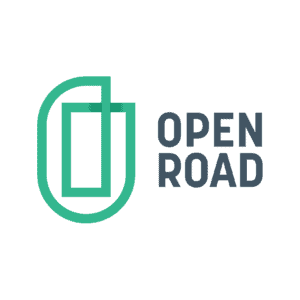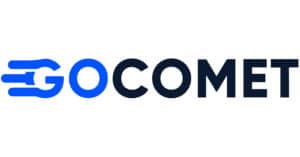Clearer insights into your supply chain can help minimize disruptions, manage expenses, generate profits and ensure customers receive their goods on time. Find the six best supply chain visibility solutions, their advantages and disadvantages, and common use cases.
And when you’re finished reading, check out the other articles in our ‘Supply chain visibility’ series:
- What is supply chain visibility?
- Why real-time visibility is important in the supply chain
- How to improve supply chain visibility
- What are the best supply chain visibility solutions?
Quicklook: Best supply chain visibility solutions
- Best for brokers: Trucker Tools Smart Capacity
featured ad - Best for all-in-one solution: OpenRoad TMS (Powered by GP Transco)
- Best for large companies: Kinaxis RapidResponse
- Best for ease of use: Descartes MacroPoint
- Best for end-to-end tracking: FourKites
- Best for small businesses: GoComet
6 best supply chain visibility solutions
As you seek ways to improve your visibility, consider implementing one of these software solutions.
Trucker Tools Smart Capacity

The Trucker Tools Smart Capacity carrier relationship and capacity management platform helps empower brokers and carriers with real-time software visibility and intelligence. It’s perfect for brokerages wanting to increase load visibility, reduce the number of check-in calls, and increase operational efficiency. With a platform of more than 315,000 carriers, it helps brokers match 98% of freight with reliable trucks, and track loads from pickup through delivery. Trucker Tools’ Book-It-Now option also helps improve relationships with trusted carriers by fully automating many steps of the booking process and allowing 24/7 reloading.
Best for: Brokers
Special features:
- Pick-up to delivery visibility
- Carrier relationship management (CRM)
- Book-It-Now streamlined booking process
- Predictive load matching
Benefits:
- Improves load visibility
- Reduces the number of check-ins
- Increases carrier tracking
- Helps book more loads with fewer calls
Disadvantages:
- Lack of transparent pricing
Pricing: Variable pricing with a free demo
OpenRoad TMS (Powered by GP Transco)

OpenRoad TMS provides a user-friendly and comprehensive solution for trucking management.
With its cloud-based platform, OpenRoad TMS simplifies operations, offering features like load management, dispatch, accounting, safety, and more. The OpenRoad Driver App enhances driver efficiency with one-click dispatch and quick document uploads. The system excels in areas such as IFTA reporting, fuel card integration, driver performance monitoring, safety compliance, and maintenance management.
Best for: All-in-one solution
Features:
- One-click invoicing: allows users to generate invoices with just one click
- Driver ETA auto-notifications: automatically notifies drivers and stakeholders about estimated time of arrival
- Paperless BOL management: eliminates the need for physical bill of ladings (BOLs)
Benefits:
- Comprehensive solution
- User-friendly interface
- Real-time visibility
Disadvantages:
- Cost might not be suitable for smaller companies with limited budgets
- As a cloud-based solution, stable internet connectivity is required to prevent disruptions or technical issues
Pricing: Variable pricing with a free demo
Kinaxis RapidResponse

RapidReponse is software specifically designed for large companies that have a complicated supply chain to manage. It offers insights into everything from capacity to supply learning. Machine learning capabilities help you anticipate demand and update accordingly. Using the software, you can get real-time visibility into the supply chain and share those insights with stakeholders to create effective collaboration.
Best for: Large companies
Special features:
- Connect other systems instantly using pre-built templates
- One of the most secure systems available
- Machine learning creates predictive algorithms
Benefits:
- Capacity planning offers real-time views into resource impacts so you can make adjustments
- Inventory management tools offer deep insights, even into raw material acquisitions and delays
- Track orders while in transit
- Plan for demand using machine learning for advanced forecasting
Disadvantages:
- Mobile app has limited functions
- Lacks a free trial option
- No option for tracking planned vs. actual outcomes
Pricing: Request a demo to learn custom pricing based on your needs.
Descartes MacroPoint

Descartes MacroPoint offers tailored solutions based on the industry and a company’s role in the supply chain. That means that there is truly something for everyone, including shippers, freight brokers and carriers. The global platform aids in forecasting performance and connecting all stakeholders in the supply chain. Clearly communicate order status using one of the easiest-to-use supply chain visibility platforms.
Best for: Ease of use
Special features:
- Carrier network includes hundreds of thousands of carriers, logistics providers and drivers
- Integration team helps you get the most from the software
- Custom reports to track your chosen KPIs
- Voted the easiest-to-use supply chain visibility software by G2
Benefits:
- Customer support gets good ratings
- More affordable compared to similar products
- Industry and role-specific software
- Third-party auditors review the platform’s security regularly
Disadvantages:
- Drivers can prohibit freight view tracking
- Truck locations are approximate, not exact
- Some users report that the interface is outdated
Pricing: Schedule a platform demo to learn more about pricing
FourKites

Machine learning offers valuable insights and efficiency. Many customers see ROI from the software quickly, including streamlined efficiency and greater customer satisfaction due to more on-time deliveries.
And the software isn’t just for tracking goods in transit. It also helps companies monitor their goods while in warehouses, yards and stores.
Best for: End-to-end tracking
Special features:
- In-depth information for customers, including trailer number, ETAs and exact location
- Easy-to-use interface
- Integrates artificial intelligence with live data
- Predictive arrival times
Benefits:
- Extensive knowledge base helps troubleshoot problems
- Attentive support team
- Customer forum allows for collaboration and sharing
- Detailed analysis tools
Disadvantages:
- Significant learning curve for new users
- Expensive
Pricing: Schedule a demo to learn about pricing
GoComet

Gain greater visibility into products as they go from the warehouse to a user’s doorstep. While some of the largest companies in the world use the software, it also provides helpful tools for small businesses. Select from many tools and modules to make the software fit your needs.
Best for: Small businesses
Special features:
- Automate and optimize recurring processes
- Free trial
- Simple systems integration
- Global shipment tracking
Benefits:
- Intuitive interface
- View predicted delays before they happen so you can adjust accordingly
- Responsive support team
- Clear, in-depth demurrage days left and potential demurrage costs
Disadvantages:
- Downloadable reports are challenging to read
- Mobile apps have limited functionality
- External stakeholder onboarding can be challenging
Pricing: Contact the company for up-to-date pricing
What are supply chain visibility solutions?
Supply chain visibility solutions help monitor raw materials, intermediate products and completed goods as they move through the supply chain. The more insights your company has into where required goods and finished products are located, the better you can plan for manufacturing or inform customers of delays to set expectations.
One study found that the benefits of supply chain visibility extend beyond operational efficiency and strategic competencies.
Why does supply chain visibility matter?
This important aspect of operating a company within the supply chain matters for various reasons. For instance, it:
- Helps set and meet customer expectations: Greater visibility will help you provide the best products at fair prices with a strong customer experience every time. This helps strengthen your brand reputation.
- Improves operational efficiency: The more efficient your operation is, the lower your expenses will be. Using these tools, you can learn what activities occur at various places in the supply chain and the resources you’re devoting to those activities to look for opportunities to streamline operations.
- Reduces regulatory and reputational risk: While the supply chain is vital to modern life, it also poses financial reputational risks. That’s why it is a highly regulated industry. By tracking supply chain activities closely, you can ensure you meet all regulations no matter what marketplaces you operate in.
- Increases resilience: One small change in the supply chain can disrupt your entire operation. Using visibility software helps you anticipate disruptions so you can pivot your business accordingly and keep everyone up to date on what’s happening. This feature helps minimize disruption while managing valuable customer relationships.
Greater data insights to power better relationships
Implementing supply chain software can help great companies maintain their status in the industry while improving operational efficiency and ROI. Review the leading options listed above to find one that provides the greatest insights and visibility for your business.
FAQ
Supply chain visibility is typically measured by the extent to which a company can track its products, components, or materials at each stage of the supply chain, from sourcing and manufacturing to distribution and final delivery. Key metrics might include real-time status updates, tracking accuracy, order and shipment traceability, and the speed and reliability of information flow between all parties involved. The ultimate goal is end-to-end transparency, where any stakeholder can pinpoint the location and status of a product at any given time.
Supply chain visibility is the collection of data relating to the supply chain and its status. Transparency is offering that data to stakeholders, including customers, to improve their experience.
Automated systems can show where materials are located so an organization can make better-informed decisions about sales and inventory.



